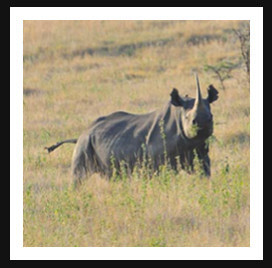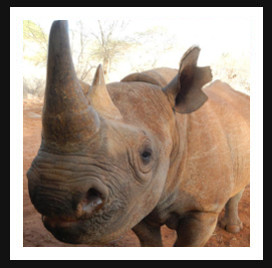
Home | About Us | Safaris & Photographic Trips | Blog | Contact Us | Sitemap | Disclaimer
The Essence of the Journey!
We would like to do this trip to experience new cultures.
We would like to understand what makes African people pure.
What are their spiritual beliefs, understandings?
How does the spiritual world we know exist to them?
What can we learn from them?

Rhino Conservation Projects
Projects
There are some projects that have approval and are ready to go.

Malawi
There are two viable populations of rhino in Malawi. Liwonde has a population of 30 odd black rhino. They are fenced in but experiencing
breakthroughs by males looking to setup their own territories. They are also being chased out by the dominant male. Mike heads up the Rhino
program and with the ear of the president is able to have every rhino in the country treated. Their funding is limited, with some months only
receiving 500 USD to run the entire National Park.
This National Park requires assistance. Our ambition is to have every rhino in Malawi treated with the Rhino Rescue Project technology. Then we can make the statement - ‘every rhino in Malawi is treated, stay away …’
Uganda
14 rhino in the sanctuary, Angie Genade and her team would like to treat all the rhino in the sanctuary. However they have limited to no funding.
Breeding in the sanctuary is successful and it will soon be possible to relocate and/swop rhino’s out so as to improve the genetic pool of the animals in the reserve.
With successful breeding having been achieved, there is a desire to populate national parks such as Murchison Falls and Queen Elizabeth National Park. All relocations should be done with treated animals to ensure maximum chance of success. Funding is required for this.
Mkomazi
Tony Fitzjohn of George Adamson Fame has got permission from TANAPA to treat all his rhino. He is actively involved in conservation in Kenya as well.
He is a great ally to have in East Africa. Besides the successful re-patriation of lion populations, he has successfully bred and relocated African Wild
Dog into various parks in East Africa.’I would like all my rhinos to be treated, however we need funding for this …’

Other Projects on the cusp:

Kenya
Proposals have been presented to Kenya Wildlife Services (KWS). All animals in East Africa are owned by the state and they look
to give us the approval so that animals within the region may be treated. This is critical, irrelevant of whom the owner of the land is.
Conservancies like El Pejeta and Lewa are prime candidates for treating their animals with the Rhino Rescue Project treatment. Both conservancies run a slick operation, and yet have recently had an upsurge in poaching in their area. This is of paramount concern as the RRP treatment would better equip them to deal with the poaching scourge.
There are also a number of reserves that are looking to release rhino into new areas. These new populations would be key candidates for RRP treatment. Once the animal has been immobilized, we may as well give it the best chance of survival moving forward.
Education
Continued education is critical of all anti-poaching processes. If the poachers do not know that there is no value in the treated horn,
the measures and processes we are putting in place are of little consequence. The policy of the RRP, means that we advertise on all the
external boundaries/ parameters of the reserves, in multiple languages, warning people that the rhino in the area are treated and should
not be used for human consumption. This education needs to extend as far as possible so that people in the Far-East realize that any horn
that they come across that has a red dye to it, should be avoided at all costs as regards Asian medicine.
Even the simple truth that rhino horn has no bearing and /or impact on any medical condition whatsoever, needs to be communicated to the folk in the Far East.




